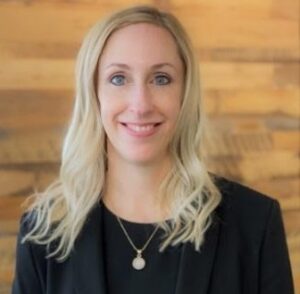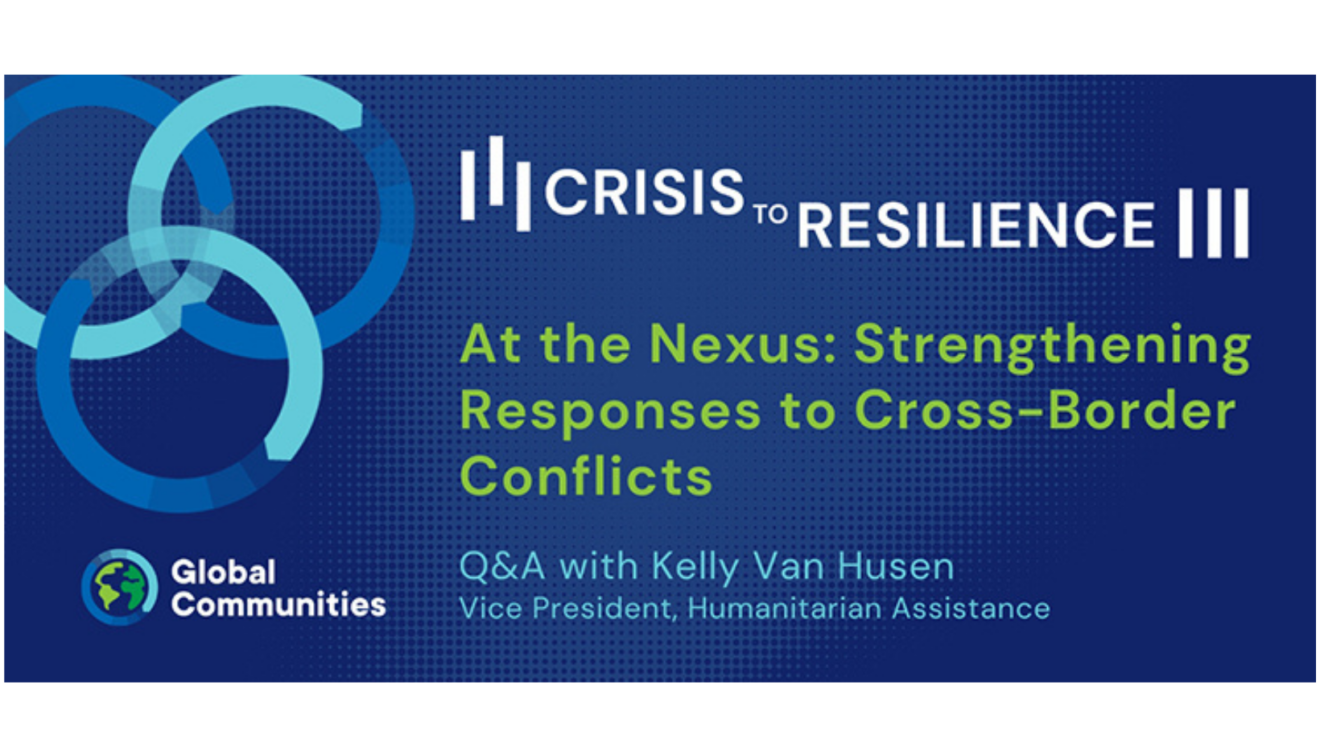This post is sponsored by Global Communities
In 2023, a record 339 million people will need humanitarian assistance and protection, according to OCHA, the United Nations Office for the Coordination of Humanitarian Affairs. Following natural disasters, conflict or both, affected communities and individuals will need support as they restart livelihoods, rebuild homes and neighborhoods, and recover from the trauma of disaster, poverty and instability.
Kelly Van Husen is the Vice President of Humanitarian Assistance at Global Communities. Van Husen has over 16 years of experience in the international development field, with a focus on humanitarian assistance, stabilization, and post-conflict transition programming. As Vice President, Humanitarian Assistance, she oversees Global Communities’ humanitarian programming and business development and sets the strategic direction for the Humanitarian Assistance department.
Recently we spoke with her about how Global Communities is making a worldwide difference:
Question: Global Communities works in complex, often fragile environments affected by poverty, conflicts, and natural disasters. How do you support communities along their journeys from crisis to resilience?
Answer: Global Communities partners with communities to meet their needs wherever they are on this journey, often layering humanitarian and development programs within the same communities. This may include life-saving emergency relief through food and cash transfers, assistance needed to recover from a crisis, and building long-term resilience to shocks and stresses. We strive to address communities’ needs holistically. In Ukraine, for example, we support local governments in repairing infrastructure damaged by the war and we help them identify, prioritize, and respond to citizens’ needs arising from the conflict. At the same time, we provide assistance to individual families who are particularly vulnerable, especially where the local government or other actors are not able to step in.
Q: What are the most significant challenges that organizations like yours face while responding to cross-border conflicts, such as the war in Ukraine? How do you address these challenges?
A: There are manifold challenges that all humanitarian and development actors face while responding to cross-border conflicts. In addition to the safety and security of staff and project participants, three types of challenges immediately come to my mind.
The first is remote management. Our sector’s remote management capabilities have greatly improved during the COVID-19 pandemic, but it still presents challenges. Organizations like ours must be deliberate about investing in technology and tools that enable remote management, data collection, and project monitoring. Remote management includes the necessary technological tools to monitor work from afar, but also the training and capacity development for staff to ensure that they are equipped and empowered to take decisions in the field when they need to.
The second is displacement, which causes significant coordination challenges. We frequently work with populations who are displaced, both internally and cross-border. Our staff may be displaced or working remotely from other locations too.
And finally, there are legal and political challenges. The dynamics of cross-border access and assistance are always complex, involving a wide range of actors governed by often distinct regulatory frameworks and driven by their own geopolitical interests. Some of these actors are non-legitimate, which further complicates programming, especially in border areas. As an international organization, we frequently work with multiple governments, civil society organizations, and other actors on opposite sides of the border to deliver assistance. We have seen these types of challenges with Türkiye and Syria for example.
Q: Global Communities had a strong presence in Ukraine prior to the war. How did you pivot your programming to address the rapidly changing needs on the ground?
A: Our long-standing programing in Ukraine meant that we had an established, trusted network of government and civil society partners, and deep community connections that we were able to quickly leverage to pivot to emergency response. First, we capitalized on our DOBRE program, which supports decentralization, local governance, and local service delivery to support the recovery of government services in war-affected communities, including education, water supply, and solid waste management. For example, we provided tools to municipalities to repair and maintain community infrastructure. Second, we leveraged the relationships built under DOBRE to implement the Community Led Emergency Action and Response (CLEAR) program, which provides protection, shelter, and WASH support to conflict-affected people. This is a prime example of our nexus programming involving layered development and humanitarian efforts.
Q: Could you tell us how Global Communities responds to the protection needs of conflict-affected populations, especially women, children, and internally displaced people?
A: We provide a range of services to conflict-affected populations, including services to respond to the protection needs of vulnerable groups. First and foremost, we seek to ensure that all our programming considers the safety and dignity of staff and program participants and does no harm. This includes specific actions like considering the timing and location of humanitarian distributions and analyzing how specific activities might impact household dynamics and traditional societal or gender roles. We also ensure that participants have direct access to our staff so that they can provide feedback or share concerns about any of our activities. They can do so confidentially or anonymously if they choose. Our protection services include service mapping, psychological first aid, and access to safe spaces for women and children, where we offer various psychosocial support activities. We also provide limited case management and other forms of support for survivors of gender-based violence.
Q: Global Communities is clearly a trusted implementer of programs at the humanitarian and development nexus. How do you contribute to building lasting, positive peace?
A: I think the most critical way we do this is by being deliberate about selecting local stakeholders to partner with so that our programming is conflict-sensitive, inclusive, and transformative where possible. We design our programs with input from program participants, community leaders, and local partners to ensure that a variety of voices inform our interventions. This helps mitigate the risks of excluding a group or causing unintentional harm. We also seek to promote positive peace by designing activities that build social cohesion and address the drivers of conflict and fragility, including existing tensions, power imbalances, and inequities. In Sri Lanka, for example, our Social Cohesion and Reconciliation (SCORE) program promotes a shared and inclusive Sri Lankan identity, reduces socio-economic disparities, and strengthens resilience among multi-ethnic and multi-religious communities. Working alongside communities and partners is key to ensuring local ownership and buy-in. We always strive to uphold humanitarian principles of humanity, neutrality, independence, and impartiality in our work.
Q: What are, in your view, Global Communities’ most significant achievements in responding to cross-border conflicts. How can our readers learn more about them?
A: Our ability to build and maintain community relationships in times of conflict or crisis makes us truly unique. We are not an organization that parachutes in to respond to disasters. We build long-term partnerships with local authorities and communities, and we strive to adapt our work to meet their needs as they evolve. It is the partnerships and the flexibility that have enabled us to maintain a presence in fragile countries, such as Syria, Yemen, and Ukraine, through many ebbs and flows of conflict, crisis, and stability. We have had a consistent presence for nearly 10 years in Syria, for nearly 20 years in Yemen, and more than seven years in Ukraine. We are committed to delivering layered, multi-faced programming in these locations for as long as we can effectively meet the needs of our partner communities.
There are more communities than ever affected by catastrophic natural disasters, conflict, and disruptions, resulting in communities with urgent needs. With a focus on fostering resilience and meeting humanitarian needs, Global Communities strives to achieve more equitable communities through providing psychosocial support to help recover from trauma, rebuilding homes, and restarting livelihoods.
For more information, please visit our website. We especially encourage you to explore our Crisis to Resilience series.
